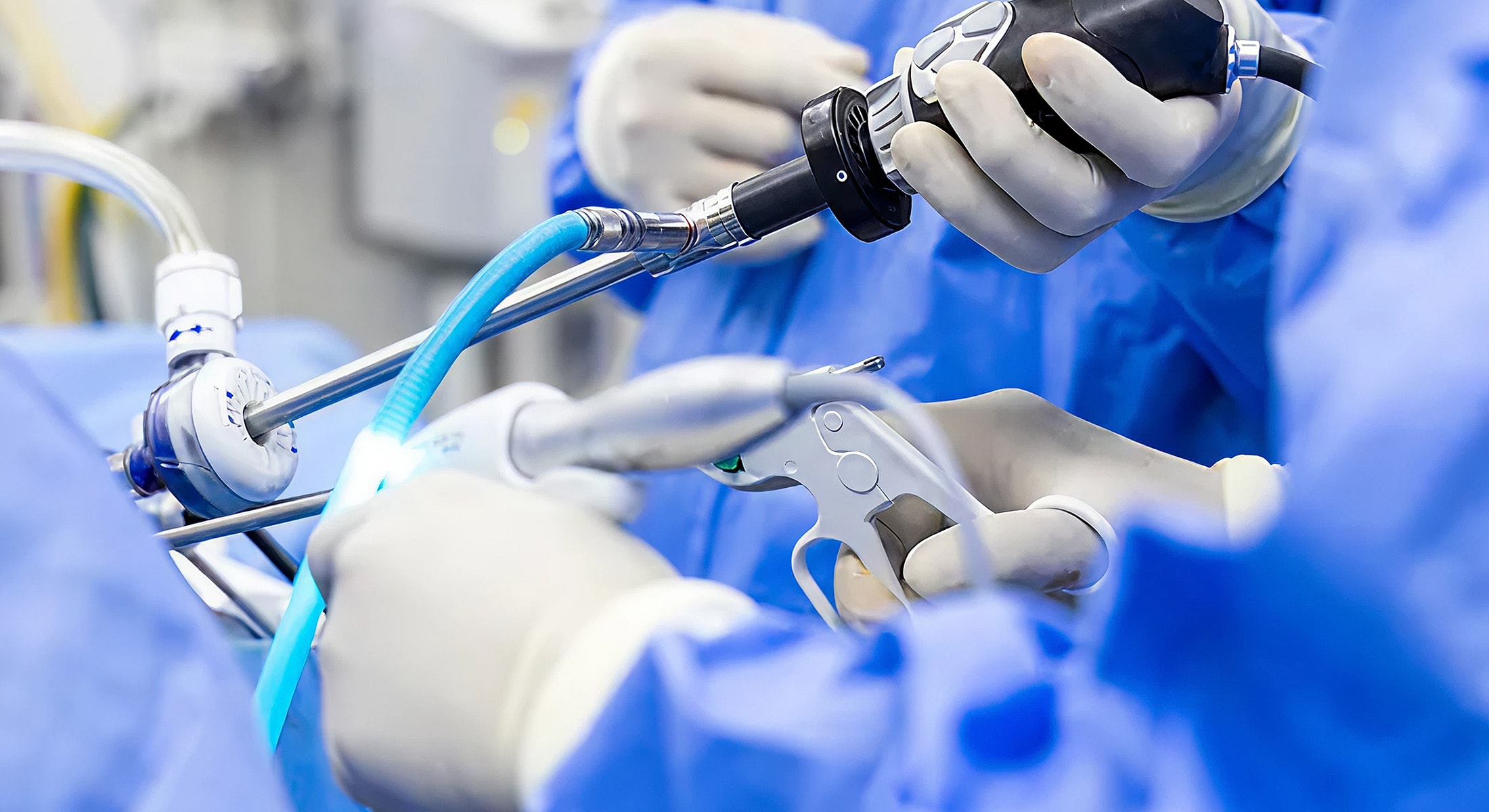Dr. Kofi offers arthroscopy as a minimally invasive and efficient solution to help you return to movement sooner. This approach enables targeted treatment with smaller incisions, reduced discomfort, and a faster recovery. It’s a precise and effective option for patients looking to return to their daily activities with confidence.

Minimally Invasive Care for Upper Extremity Joint Issues —
As Simple As Possible
We deliver specialized care using modern surgical tools and a process that stays clear, human-centered, and tailored to you. Dr. Kofi specializes in arthroscopic surgery, a minimally invasive procedure that uses a small camera and specialized tools to diagnose and treat joint problems with less downtime and a faster recovery. Whether you’re dealing with pain, instability, or an injury that hasn’t healed, we provide straightforward guidance and trusted treatment to help you return to work, activity, and your life.
When pain in your shoulder, elbow, or wrist limits your motion or function, arthroscopic surgery can be a precise, effective solution. We keep orthopedic care simple, clear, and effective.
Small incisions, less pain, faster healing.
Return to work and activities sooner than with traditional surgery.
Camera-guided surgery allows for accurate diagnosis and treatment.
Often performed the same day, no long hospital stay.
Effective for shoulders, knees, elbows, and other major joints.

Arthroscopic surgery is a modern orthopedic technique that allows doctors to see inside a joint using a small camera (arthroscope) and treat problems without making large incisions. This approach reduces pain, scarring, and recovery time compared to traditional open surgery. Commonly used for knees, shoulders, hips, and elbows, arthroscopy can repair ligaments, remove damaged tissue, or address cartilage injuries. Dr. Kofi utilizes arthroscopic techniques to provide targeted care, ensuring you understand exactly what’s happening and how to get back on track.
On the day of surgery, you’ll check in and meet with Dr. Kofi to review the procedure and answer any last-minute questions. You’ll be given anesthesia for comfort, and then small incisions will be made around the joint. A tiny camera is inserted to give a clear view, and specialized tools are used to repair or remove damaged tissue. Because the incisions are small, there’s less bleeding, less pain, and a quicker recovery. Most procedures are outpatient, meaning you’ll go home the same day with clear aftercare instructions.
We use imaging, physical exams, and conversation to determine whether surgery is the right path.
Small incisions. Precision tools. Less tissue disruption.
Based on your activity level, goals, and insurance coverage, we tailor our approach to what’s best for your recovery.
We work with your therapist or help you find one to support healing, regain strength, and avoid setbacks.
Your care doesn’t stop after surgery. We stay involved until you’re ready to move forward independently.
Arthroscopy is often recommended for patients with joint pain, stiffness, or injury that hasn’t improved with non-surgical care. Most often, these concerns are caused by torn ligaments, meniscus tears, cartilage damage, inflamed joint linings, loose bone or cartilage fragments, and shoulder impingement. Dr. Kofi addresses the root cause directly, restoring movement, reducing pain, and preventing further joint damage.

Rotator cuff tears, labral tears, impingement, and instability
Cartilage damage, loose bodies, and persistent inflammation

The biggest advantage of arthroscopy is its minimally invasive nature. Smaller incisions mean less scarring, less post-surgical pain, and faster recovery compared to open surgery. The procedure is also highly precise, as the camera provides a clear view of the inside of the joint. Arthroscopic surgery allows patients to return to normal activities sooner and with better long-term outcomes, delivering a clear path to recovery without the extended downtime of more invasive surgeries.
Arthroscopic surgery may be ideal for you if you have ongoing joint pain, swelling, or limited mobility that hasn’t improved with non-surgical treatments like physical therapy, medication, or injections. Arthroscopy is generally recommended for patients with specific injuries or damage that can be repaired with minimally invasive techniques. Dr. Kofi will evaluate your case and explain whether arthroscopic surgery is the right solution for your needs.

Recovery is typically faster and less painful than traditional surgery, but it still requires some rest. Most patients return home the same day and may use a sling or a brace for support, depending on the joint. Swelling and discomfort usually improve within a few days, and physical therapy to restore strength and mobility often begins shortly after. Most patients return to work and light activities within a few weeks.
We use the latest surgical tools-but our key strength is making the process simple, the care personal, and the path forward clear.

When can I see results? How long do they last?
Most patients notice pain relief and improved mobility within weeks of surgery, with continued improvement as physical therapy progresses. The results are often long-lasting, especially when combined with rehabilitation and healthy joint care. While no procedure can fully stop the effects of aging or arthritis, arthroscopy can significantly reduce symptoms, improve function, and delay the need for more extensive surgery.
We make the process simple. No endless referrals, no complicated scheduling — just direct answers and a clear treatment plan. Dr. Kofi combines advanced surgical expertise with a patient-first approach, making sure you understand your options every step of the way. With minimally invasive techniques, transparent communication, and a commitment to getting you back to your life, we set a new standard for orthopedic care.
Most patients experience only mild discomfort after surgery, which improves quickly. Pain is typically much less than with open surgery.
Most arthroscopic surgeries take 30 minutes to 2 hours, depending on the complexity and the joint being treated.
Many patients return to desk work in a few days to a week. Physically demanding jobs may require more time off.
If you’ve had persistent pain, loss of motion, or a failed response to conservative care, it may be time to explore surgical options.
Usually, yes. We’ll guide your post-op recovery plan and help you find a therapy solution that works for you.
Most patients begin to see improvement within weeks, but full recovery depends on the condition and your healing process.
We work with most insurance plans, including Medicaid. Some procedures require authorization; we’ll help manage the process from start to finish.